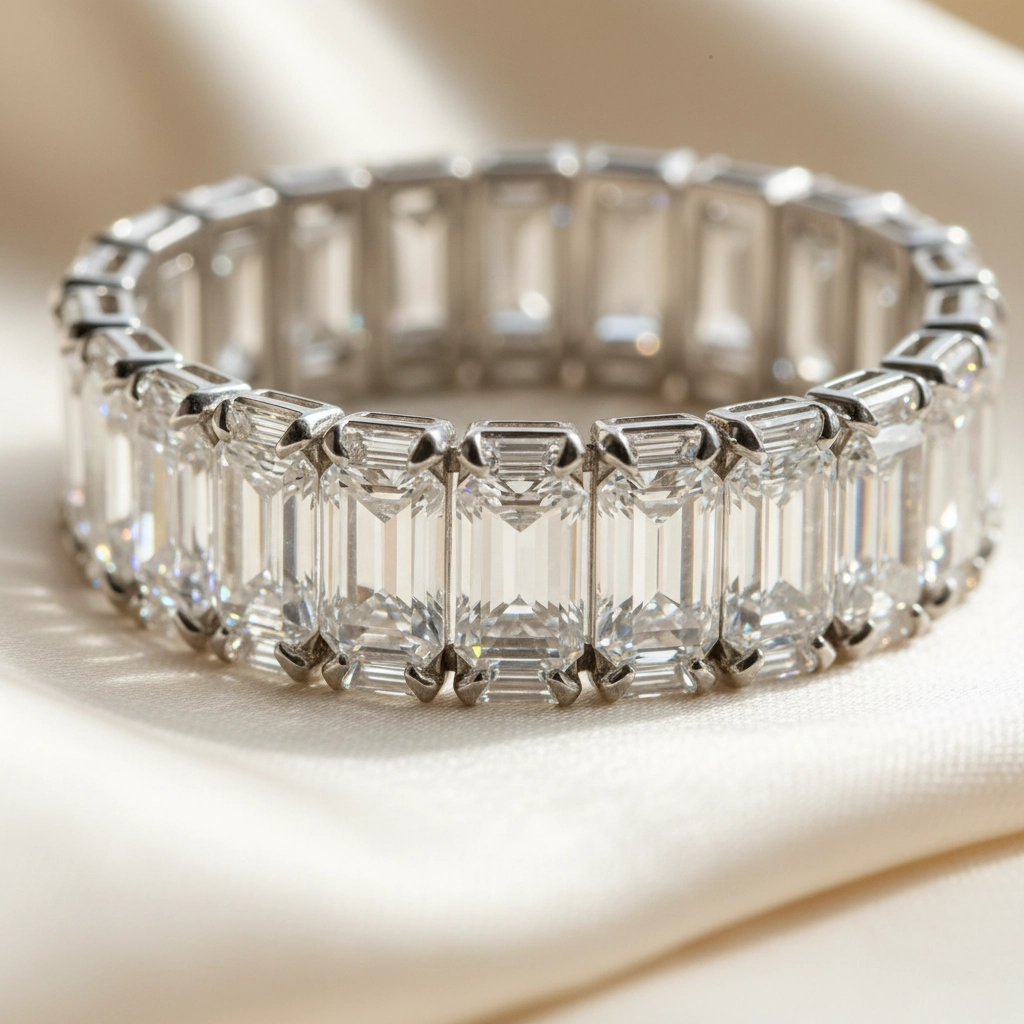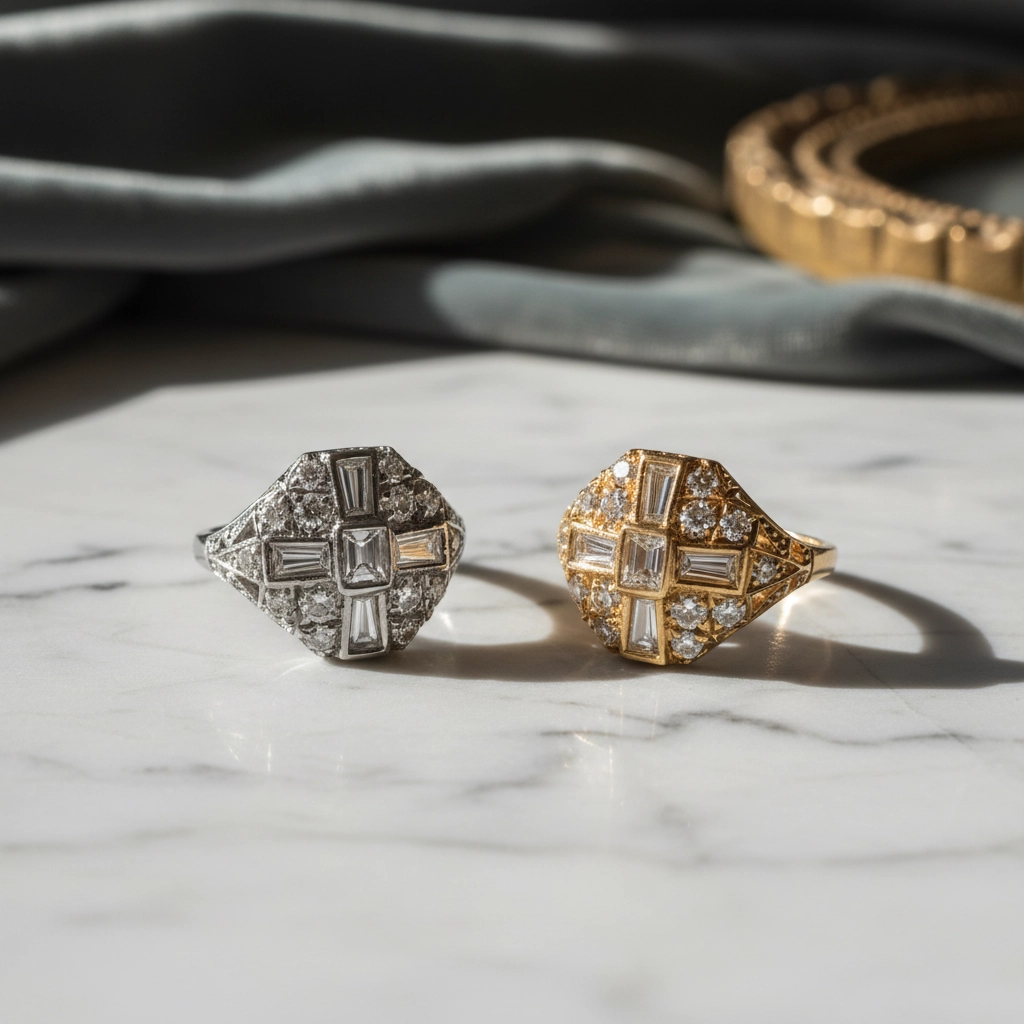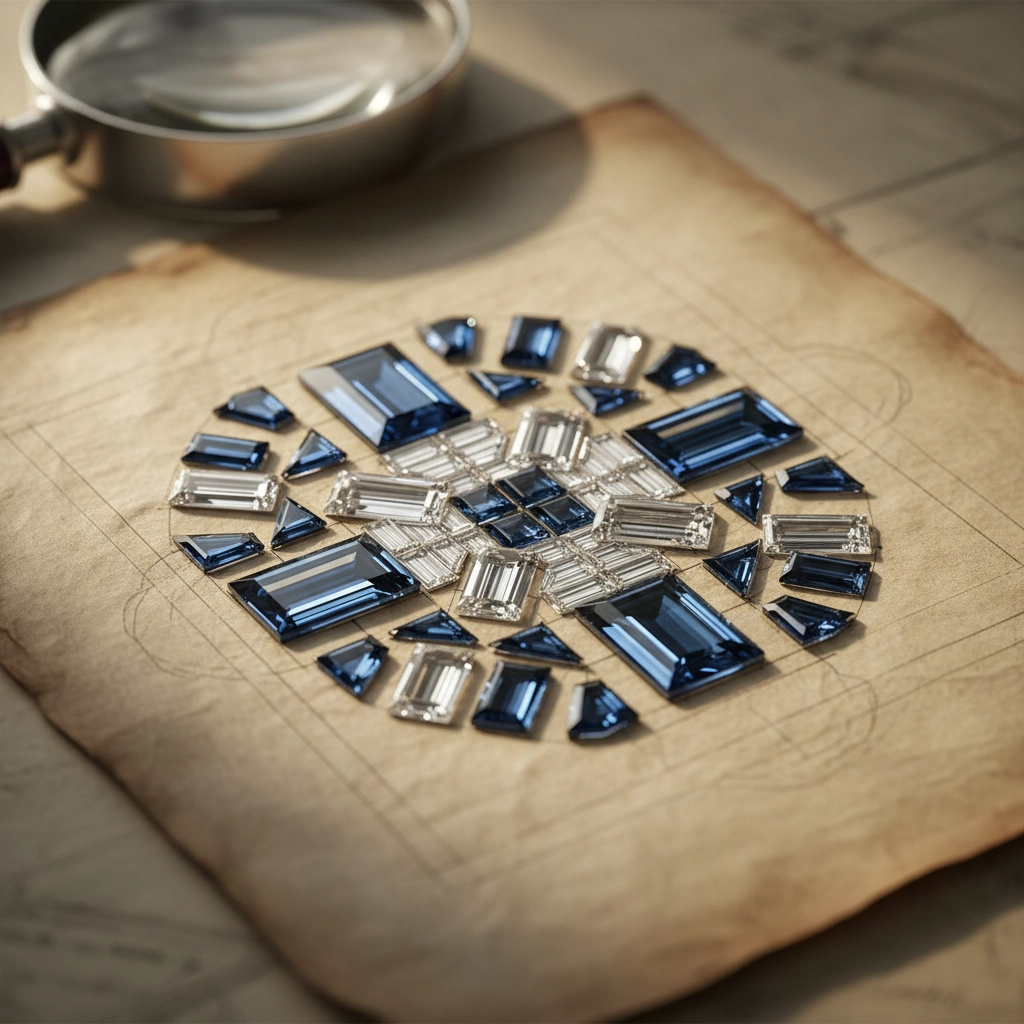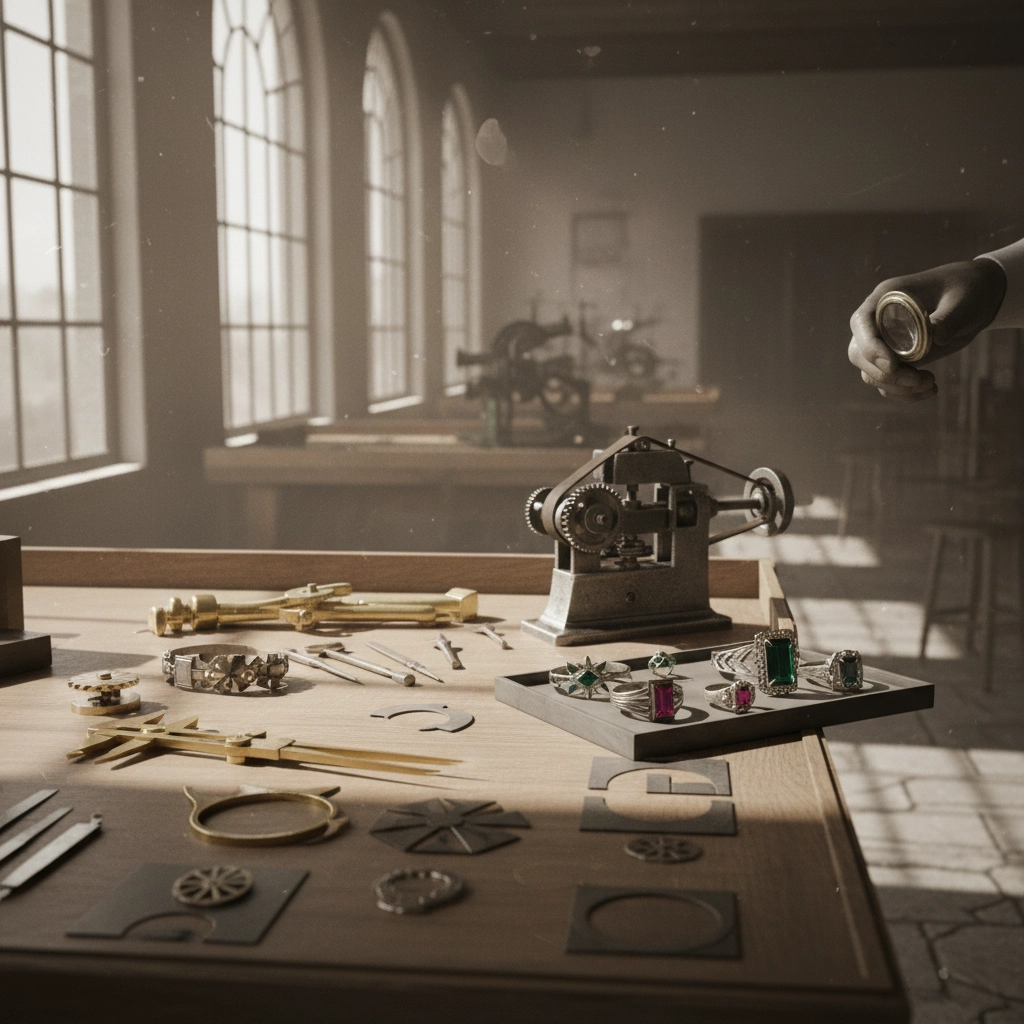Art Deco Era Jewelry, Part 3: Techniques & Innovations that Changed Jewelry Forever
If you've been following our Art Deco series, you know we've covered the era's bold spirit and iconic motifs. But here's what really gets me excited about this period: the incredible technical innovations that literally changed how jewelry was made forever. We're talking about breakthroughs so revolutionary that they're still influencing how we create pieces today.
Think about it: what if I told you that during the 1920s and '30s, jewelers figured out how to make gemstones appear to float without any visible metal between them? Or that they developed new ways to cut diamonds that maximized brilliance in patterns never seen before? These weren't just aesthetic choices: they were engineering marvels.
The Invisible Setting: Pure Magic in Metal
Let me start with what I consider the crown jewel of Art Deco innovation: the serti invisible or invisible setting, pioneered by Van Cleef & Arpels. Picture this: you're looking at a bracelet or ring that appears to be made entirely of gemstones, with no visible metal holding them together. How is that even possible?
The secret lies in an incredibly sophisticated groove-and-rail system. Each gemstone is individually grooved on its sides and slides into microscopic rails built into the mounting. It's like a three-dimensional puzzle where every piece has to fit perfectly, creating seamless surfaces of continuous gems. The precision required is mind-blowing: we're talking about tolerances measured in fractions of millimeters.

This technique didn't just look spectacular; it completely changed how light moved through jewelry. Without metal interruptions, the entire piece could blaze with uninterrupted brilliance. Have you ever wondered why Art Deco pieces seem to glow from within? This is your answer.
Platinum: The Game-Changing Metal
Now, let's talk about platinum: the metal that made most of these innovations possible. Before Art Deco, jewelry was primarily made in yellow gold, which was beautiful but had limitations. Platinum changed everything.
First, platinum is incredibly strong. This meant jewelers could use much less metal to securely hold gemstones, creating those airy, delicate-looking pieces that seemed to defy gravity. A setting that would require thick gold bands could be achieved with whisper-thin platinum ones.
But here's the kicker: platinum's white color made diamonds appear significantly brighter. If you've ever compared a diamond in yellow gold versus platinum, you know what I'm talking about. The white metal doesn't compete with the diamond's fire; it enhances it. Plus, unlike silver, platinum never tarnishes or changes color.

The only problem? Platinum was expensive. So in 1918, innovative jewelers developed substitutes like osmior, plator, and platinor: materials that gave you platinum's aesthetic benefits at a fraction of the cost. This democratization of white metal settings was crucial to Art Deco's widespread appeal.
Revolutionary Stone Cuts and Arrangements
Art Deco gem cutters didn't just follow traditional cutting methods: they reinvented them. They learned to maximize brilliance in entirely new ways, developing cuts and shapes that could be arranged in those signature mosaic-like patterns we associate with the era.
Think about calibré cuts: precisely cut gemstones designed to fit together like puzzle pieces, creating geometric patterns with no gaps. Or the increasingly popular baguette cuts that could be arranged in radiating sunburst patterns. Each cut was chosen not just for its individual beauty, but for how it would interact with its neighbors.
The most fascinating part? Cutters began organizing different diamond cuts based on their specific brilliance, luminosity, and reflective qualities. They understood that an emerald cut would create long flashes of light, while a round brilliant would produce more scintillation. By combining these strategically, they could control exactly how light moved through a piece.
From Handcraft to Machine Precision
One of the most significant shifts of the Art Deco era was the embrace of machine precision. While Victorian jewelry celebrated the hand of the craftsman: with its subtle irregularities and organic flow: Art Deco jewelry celebrated the perfection of the machine age.
Settings became more precise, with perfectly parallel lines and exact geometric angles. This wasn't just an aesthetic choice; it was a practical necessity. Those invisible settings and channel settings I mentioned? They simply couldn't be executed with the tolerances achievable through hand methods alone.

The influence of industrial design is everywhere in Art Deco jewelry. Pieces were directly inspired by ball bearings, motor car engines, and architectural elements. This wasn't jewelry trying to imitate nature: it was jewelry celebrating human ingenuity and technological progress.
Making Luxury Accessible Through Innovation
Here's something that really excites me about this era: how innovation made luxury more accessible. Take cultured pearls, for example. Japanese innovators developed a process for implanting pearl-bearing oysters with mother-of-pearl beads, creating enough cultured pearls to make them the iconic jewelry of the 1920s.
Suddenly, pearls weren't just for the extremely wealthy. A working woman could own a strand of lustrous pearls, even if they weren't natural. This democratization of luxury was revolutionary.
The era also embraced synthetic materials like Bakelite and other early plastics. These weren't cheap imitations trying to fool anyone: they were celebrated as modern materials in their own right. Bakelite jewelry became fashionable precisely because it represented the new age of synthetic materials.
Surface Treatments and Color Innovation
Art Deco jewelers also revolutionized surface treatments. They largely abandoned the labor-intensive enameling techniques popular in earlier periods, replacing them with sophisticated lacquer techniques imported from the Far East.
Here's a fascinating detail: Chinese workers who had lacquered airplane propellers during World War I were organized into studios to lacquer jewelry and accessories. These techniques were less expensive than traditional enameling and allowed for vibrant, durable colors that perfectly complemented the geometric patterns of Art Deco design.

The result? Jewelry that could incorporate bold blocks of color: bright reds, deep blues, emerald greens: that enhanced the geometric patterns and created that dramatic contrast Art Deco is famous for.
The Manufacturing Revolution
Perhaps most importantly, these innovations collectively moved jewelry from being purely handcrafted luxury items to products that could benefit from industrial manufacturing techniques. This didn't cheapen the jewelry: it made sophisticated design accessible to a broader market while maintaining quality.
Channel settings, pavé techniques, and standardized cuts all lent themselves to more efficient production methods. A jeweler could create multiple pieces using the same innovative techniques, bringing Art Deco style to different price points.
This manufacturing evolution meant that for the first time, jewelry could be both a celebration of cutting-edge technology and widely accessible fashion. Women weren't limited to wearing one precious piece: they could stack multiple gem-set bracelets on each wrist, creating the abundance and geometric repetition that defined Art Deco style.
The techniques and innovations of the Art Deco era didn't just change how jewelry looked: they fundamentally transformed how it was conceived, manufactured, and worn. These pieces became miniature works of art that celebrated human technological achievement while remaining deeply personal adornments.
Tomorrow, in our final installment, we'll explore how these Art Deco innovations influenced everything that came after: from mid-century modern design to today's contemporary pieces. We'll also look at why certain Art Deco techniques experienced a major revival in recent decades and how you can spot authentic period pieces versus inspired reproductions. The story of Art Deco's lasting impact might surprise you.
Cheers,
Peter